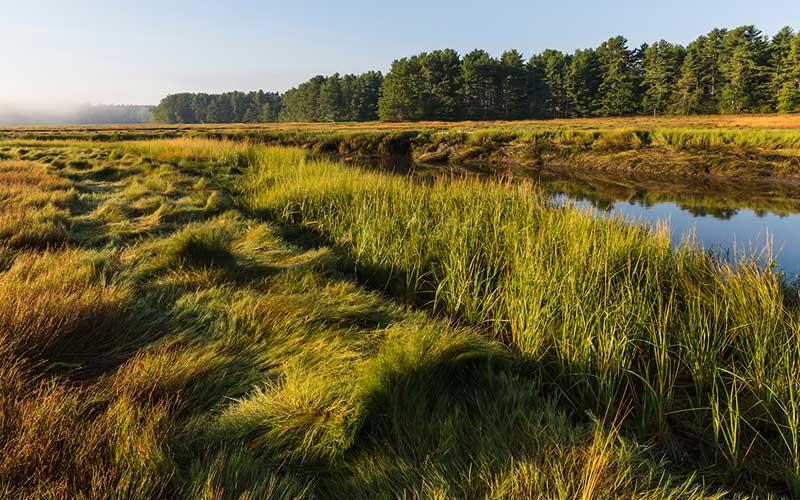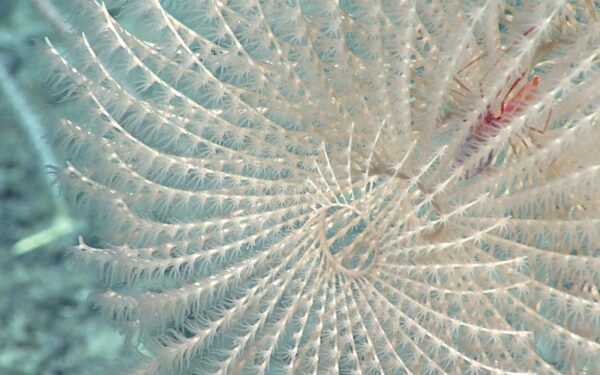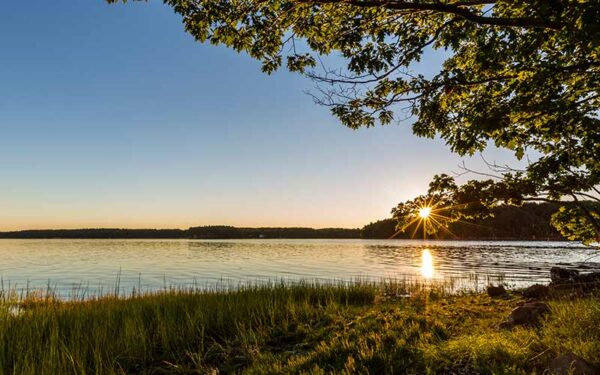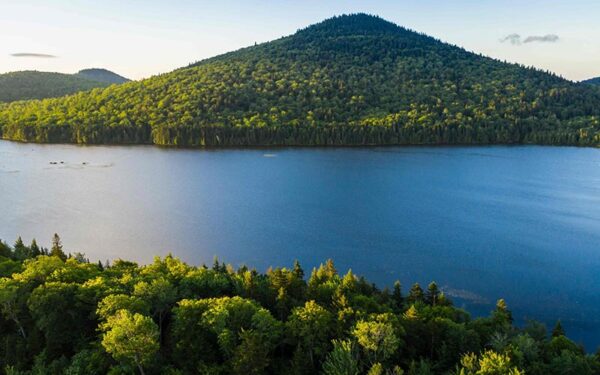
Salt marshes in Maine and across New England benefit our environment, our economy, and our communities. But they're under threat from development. Photo: EcoPhotography
Maine’s salt marshes are as iconic to our coast as our rocky beaches, yet years of development – from houses and roads to dikes and dams – is putting them at risk. As our marshes are increasingly cut off from the ocean that sustains them, they are slowly shrinking, and with them the vital benefits they provide to our environment, our economy, and our communities.
CLF has long worked to restore salt marshes to health. An opportunity now exists to continue that work in the Downeast community of Machias. With a dike that impedes the natural flow of saltwater into and out of the marsh in need of repair and rebuilding over the coming year, we are ensuring sure the agencies in charge make restoring the health of the salt marsh a priority.
Salt Marshes Benefit Our Economy, Our Environment, and Our Communities
Formed at the intersection of fresh and salt water in the tidal rivers along the Maine and Atlantic coast, salt marshes are among the most productive ecosystems in the world. Many fish species use salt marshes as nurseries, and many more fish and shellfish depend on them for living and breeding. Ultimately, more than 70 percent of commercially important fish rely on salt marshes for all or part of their lives, making them critical to the health of our local fishing industry.
Birds need salt marshes, too. Wading birds such as egrets and great blue herons feed in marshes during the summer months, while shorebirds, ducks, and other migratory species use them as stop-over points on the long journeys between their summer and winter habitats.
Scientists (and those of us living on the coast) have long valued the role salt marshes play as shields against storms and coastal erosion, which will only become more important as sea levels rise and storms grow more intense and frequent.
But salt marshes can do more than help us adapt to climate change impacts. They are increasingly recognized as key “carbon sinks,” absorbing significant amounts of climate-damaging emissions.
For these reasons – and many more – the loss of salt marshes affects all of us, and their restoration should matter to us all, as well.
The Salt Marsh in This Downeast Community Is Shrinking
Machias, with its 2,100 year-round residents, sits in the heart of the Downeast region, about 70 miles up Route 1 from Acadia National Park. In summer, traffic swells along the main road through town, and dozens of vendors line the roadside to sell their wares to tourists venturing up from Bar Harbor or down from New Brunswick.
The Machias dike bridge bears the weight of all that traffic. Built more than a century ago, the dike spans the mouth of the Middle River. The dike’s “flapper gates” allow fresh water from the salt marsh to flow out, but prevent the tidal salt water from coming in. Having been starved of the brackish mix of fresh and saltwater necessary for its health, the marsh – which once stretched to close to a thousand acres – has shrunk by hundreds of acres over the decades.
This is especially troubling for the region’s endangered salmon population. The Machias marsh falls within designated critical habitat for that king of fish. If the marsh continues its decline, it will make the work of restoring this iconic species even more difficult.
The State of Maine Needs to Rebuild the Machias Dike the Right Way
Maine Coast Heritage Trust and the Downeast Salmon Federation are focused on restoring these vital community resources – and CLF is now joining forces to support their efforts.
As the dike reconstructions move forward, our goal is to ensure that decisions made by the Maine Department of Transportation (DOT) and the U.S. Army Corps of Engineers include the restoration of these salt marshes. To that end, we will be emphasizing DOT’s obligation to restore these natural resources not only for their tremendous ecological value but also their growing importance in helping Machias deal with rising sea levels and storm surges. Flooding is a problem Machias residents know all too well already, as a good stretch of the downtown is underwater at times of high tides and storms.
DOT has made several presentations to the Machias community over the past six months, with a goal of reaching a preliminary design for that town’s dike in June of 2019 and a final by August of 2020. So there is plenty of time for you to get involved and make your voice heard in support of saving these previous salt marshes.
Review DOT’s latest presentation, then send comments to Judy Gates (Judy.Gates@Maine.gov), Director of the Environmental Office at MaineDOT. Let DOT know that the Route 1 dike in Machias should be rebuilt to not only provide safe passage for people but also to restore a critical natural resource.
After Machias, Restoring the Addison Salt Marsh Is Next
The Machias dike is not the only one in need of repair and rebuilding. Just down the road, a similar dike spans the mouth of the West Branch of the Pleasant River in Addison. That salt marsh, too, is slowly shrinking due to development and the dike’s “flapper gate” design. As that reconstruction project gains steam, we’ll keep you informed so that together we can ensure that this marsh, too, is given the chance to rebound.




